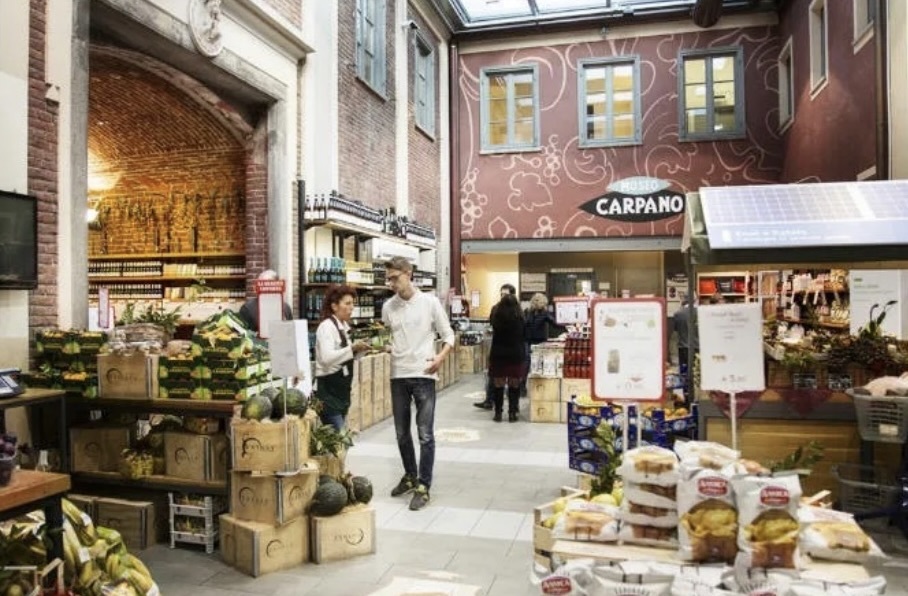The start of Eataly
In addition to discovering an abundance of new foods, there was a lack of some ingredients that Italian Americans were used to having in their cooking, such as Salami. This proposed an opportunity for Italian American entrepreneurs to ship in bulk, items that were in high demand in America. This led to there being over 10,000 Italian-run grocery stores by the late 1930s (Cinotto, 2013).
When Italians first immigrated to the US their food was originally associated with poverty and foreignness. In the 1930s, during the Great Depression, Italian-American restaurants were largely viewed as working-class establishments, serving inexpensive, hearty meals that were seen as cheap in comparison to more familiar American foods. However, the economic conditions of the time made establishments like these resilient, as they catered to the growing demand for affordable food during tough times (Cinotto, 2013). However, by the post-World War II era, Italy’s image underwent a significant shift, largely due to the country’s successful efforts to promote its culture globally through what political scientist Joseph Nye calls “soft power” (Nye, 2004). This saw Italy emerge as a symbol of luxury and sophistication during the 1950s and 1960s, which helped elevate Italian food from immigrant fare to a coveted cultural experience. The development of the “Made in Italy” branding, known for its quality and craftsmanship, became associated not only with fashion and design but also with food. By the 1980s and 1990s, the popularity of Italian cuisine skyrocketed, driven by both the rise of celebrity chefs and a growing interest in authentic, high-quality foods (Cinotto, 2013). The increasing availability of Italian products, such as olive oil, balsamic vinegar, and artisanal pasta, further fueled the desire for Italian culinary experiences. Italian restaurants, one confined to immigrant communities, became mainstream dining options for middle and upper-class Americans.
One Italian focused store that opened in 2007 was Eataly. Oscar Farinetti sketched his unique idea of a store that would “gather under one roof high-quality food at sustainable and reasonable prices for all, celebrate Italian biodiversity, and create an informal, natural, and simple place to eat, shop, and learn” (“Our History and Our Idea of Quality”, 2015). Before opening his first store in Torino, Italy, five years of research occurred first. Eataly became the first multifunctional marketplace dedicated to Italian excellence in the world, which helped to make it a unique store to visit. The name Eataly comes from “eating Italian” as the idea is that the food is all traditionally Italian. This helped to foster a sense of community which went on to hugely help Italian immigrants in the US, as having food from their home helped them to mentally adjust to relocating to America.
Eataly is also a place which is focussed on learning about food and learning through food, about life. This has encouraged Americans and people from other places to learn about Italian food and culture, through visiting the stores. Additionally, Americans became fascinated with the exotic flavors of Italian cuisine, which led to growth in the popularity of Italian restaurants and grocery stores, such as Eataly, in America.
Credit: Anna Edwards
